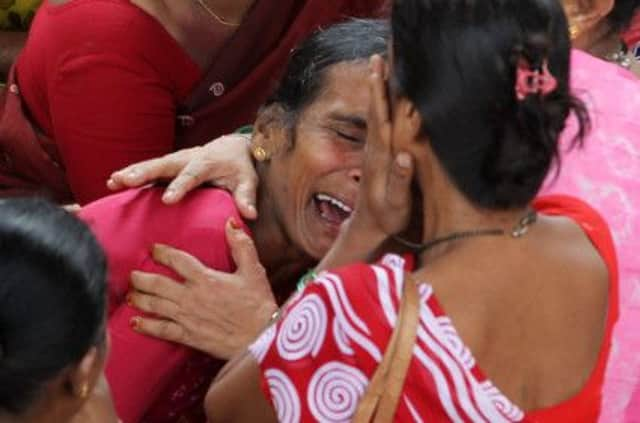India: Toll in Mumbai flats disaster reaches 42


Rescuers found just one person alive during the day.
The cause of Friday’s cave-in was not known, but neighbourhood residents complained of builders using substandard materials, with some expressing fears that their own buildings might fall down.
Between 83 and 89 people are thought to have been in the four-storey block when it collapsed early on Friday morning. Rescuers have pulled 33 people out of the rubble alive since the cave-in, but have not detected any signs of life recently.
Advertisement
Hide AdAdvertisement
Hide AdHowever, Alok Awasthi, local commander of the National Disaster Response Force, said yesterday that the operation would continue to search for the dozen or so people who were missing.
It was the third deadly building collapse in six months in Mumbai, which, like much of India, suffers from superficial building inspections and widespread graft.
Rudiben Parmar sat with weeping relatives near the rubble yesterday, waiting for news of the last of five family members who were in the building. Three – a nephew and two of his children – had already been found dead.
The nephew’s wife was rescued, but the couple’s young daughter was still unaccounted for yesterday morning. Parmar said she didn’t know who was to blame for the disaster, but didn’t care about anything but learning of her relatives’ fates.
“We will be OK once all members of our family are recovered,” she said.
Emergency workers laboured for six hours yesterday to free a 50-year-old man who was trapped for more than 30 hours beneath the debris with his leg crushed by part of a wall.
Rescuers reached him and lifted the slab of cement using a compressed air-pressure bag, and the man was taken to a hospital.
“We were able to save him, but he may lose his leg,” Awasthi said.
The death toll had climbed to 42 by last night.
Advertisement
Hide AdAdvertisement
Hide Ad“We are not finding any more signs of life right now, but we will continue to search until all are accounted for,” Awasthi said.
The building that collapsed was constructed in 1980, he said, adding that what had caused it to fall down would be determined by an investigation.
“There should not be corruption in the building process. They should use the best of the materials, then only the buildings will last,” said Sanjay Mayekar, who lives in another block of flats next to the one that fell.
Some neighbours said they were worried about the safety of their own buildings.
“We can’t know that tomorrow it won’t be our turn,” said Anupama Shivalkar, who lives in a nearby street.